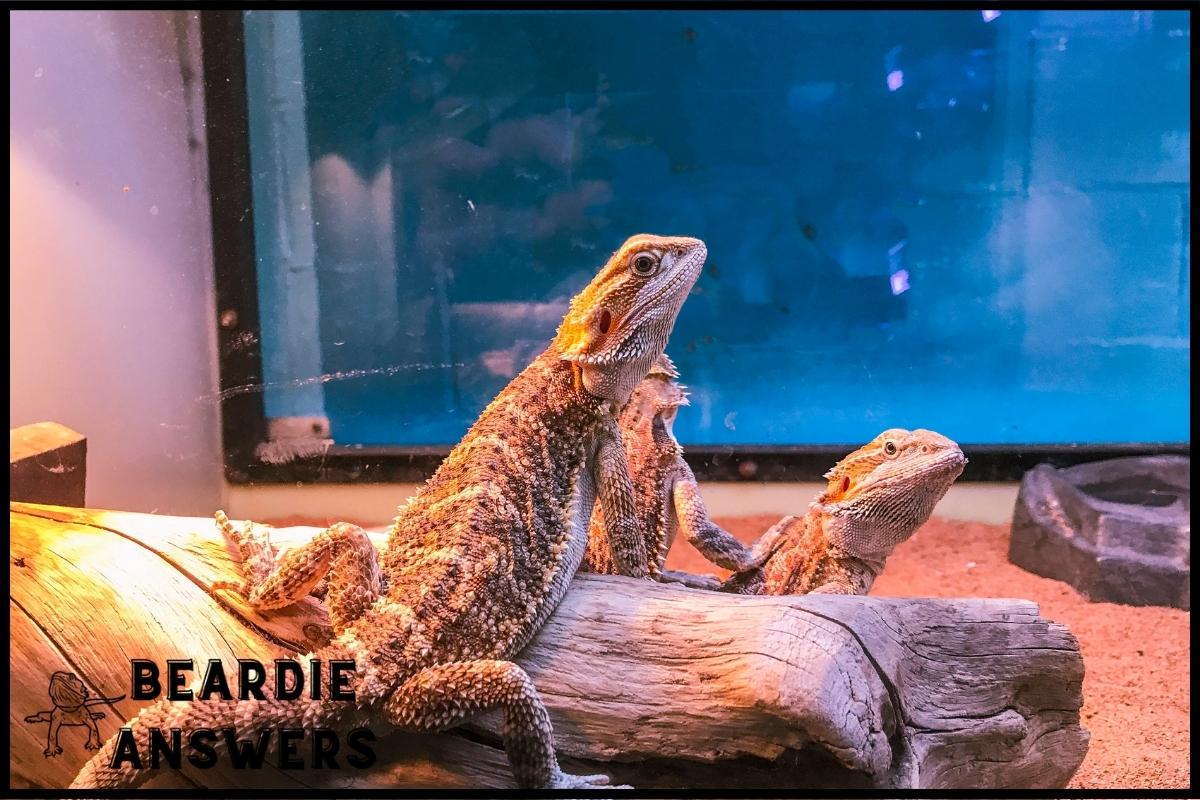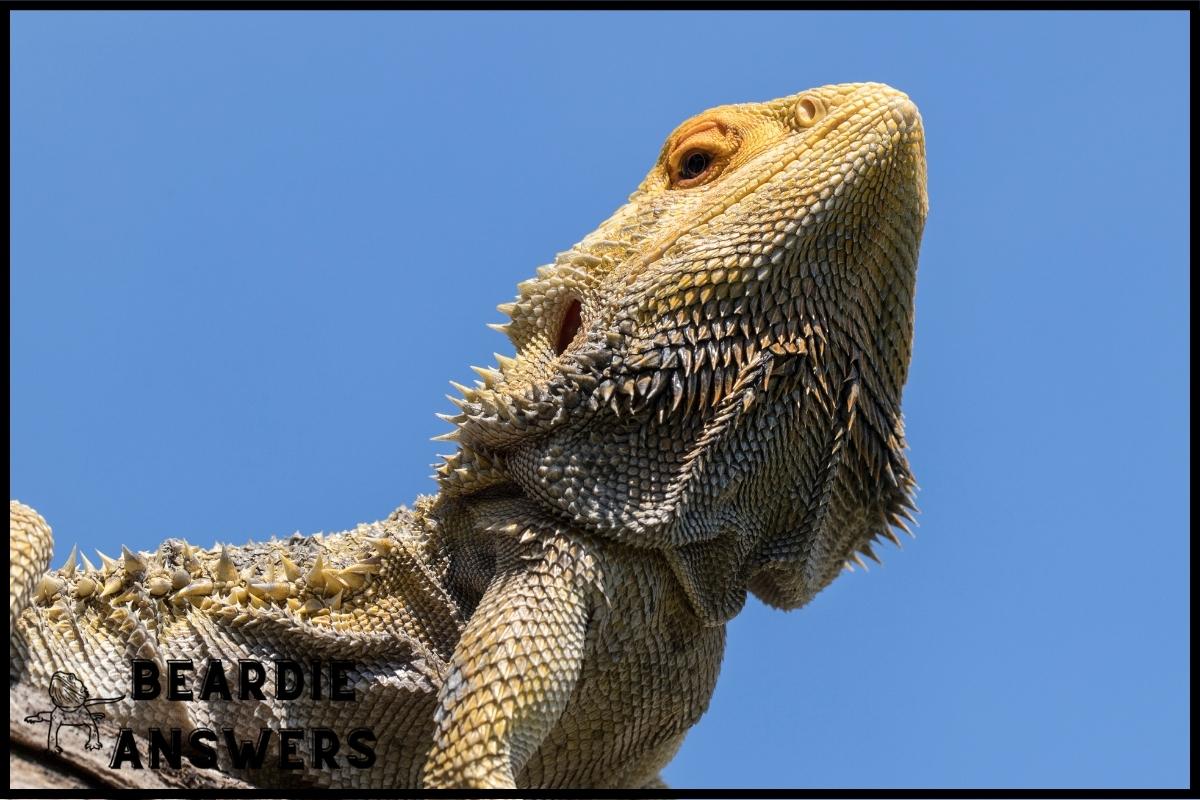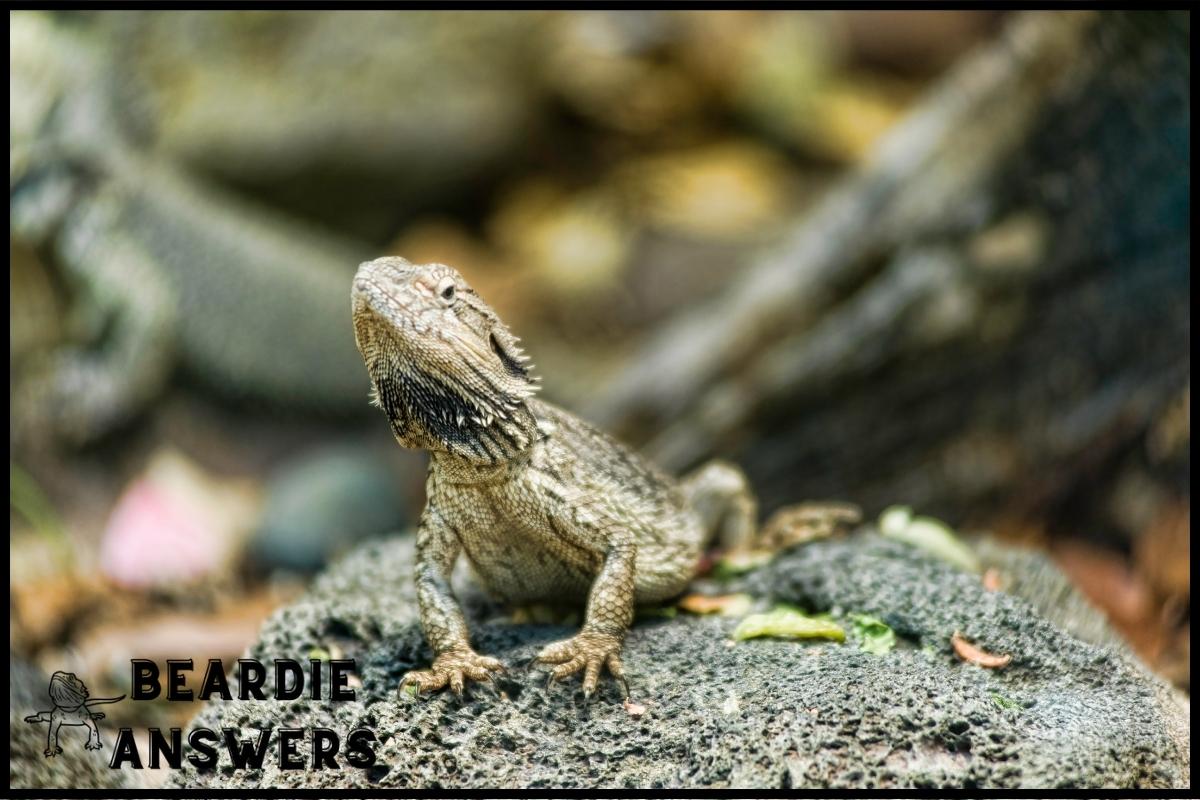Bearded dragons require specific temperature and lighting conditions to thrive. The temperature in the tank should be around 70-75°F at night to provide a comfortable sleeping environment. Too much heat or cold can cause stress and health issues, so it’s important to monitor the temperature closely.
What You'll Learn
Why Is The Temperature Important?
The temperature in a bearded dragon tank is an important factor that should not be overlooked when it comes to habitat design. It affects the overall health of your pet as well as other factors such as humidity levels. Maintaining the right temperature range for their environment will ensure they remain healthy and comfortable.
A beardie’s optimum temperatures depend on what time of day or night it is – during the day, their enclosure should have a basking spot with a temperature of around 95-105°F and then at night, these temperatures should drop down to 70-75°F. This difference helps simulate natural conditions in the wild and allows them to rest properly throughout both periods.
Providing adequate heating equipment and accurate thermometers are essential tools you need in order to monitor that your reptile is getting enough heat for its needs. Checking up on these regularly ensures that there won’t be any sudden drops or spikes in temperatures which can cause serious problems over time if left unchecked.
With this taken into consideration, let’s move onto discussing what is the ideal temperature range?
What Is The Ideal Temperature Range?
The ideal temperature range for a bearded dragon tank is between 70 and 75°F, although there may be minor fluctuations due to seasonal changes. Lighting effects can also have an impact on the temperatures in the tank, so it’s important to monitor the environment closely and adjust accordingly. It’s best to keep some kind of thermometer inside the tank to make sure that it stays within this range.
When setting up your habitat, you should think about how much natural light comes into the room as well as any other sources of heat or cold air flow. This will help ensure that your bearded dragon doesn’t become too hot or too cold during certain times of day or year. It’s also important to consider where you place your tank; if it gets too close to a window or direct sunlight, then its temperature could change rapidly and dramatically throughout the day.
To maintain optimal conditions for your pet, regular monitoring of environmental factors like lighting and temperature is essential. Keeping track of these variables allows you determine if any adjustments are needed in order to properly care for your beardie.
With proper attention and maintenance, your lizard will remain comfortable in their home all year round! To understand more about how to effectively monitor the temperature in a bearded dragon enclosure, read on…
How To Monitor The Temperature?
Monitoring the temperature of a bearded dragon tank is essential for ensuring its health and safety. Therefore, it’s important to stay vigilant in tracking the temperatures throughout the day and night.
Fortunately, there are several ways one can do this with relative ease! With a bit of effort, anyone can keep an eye on their pet’s environment without breaking a sweat.
The first step to monitoring the temperature of your beardie’s tank is setting alarms that alert you when it reaches beyond certain thresholds. This way, if your dragon starts getting too hot or cold at any time during the day or night, you’ll know about it right away.
Additionally, keeping track of temperature logs can help identify trends over time within your pet’s habitat. By taking note of fluctuations from week-to-week or month-to-month, you may be able to spot potential problems before they become serious issues.
Knowing what temperature to set your tanks at isn’t enough; being aware of how well those settings are helping (or hindering) your dragons’ habitats will ensure your pet stays safe and healthy for years to come!
Taking all these steps requires some work but it pays off in spades by giving you peace of mind knowing that everything is alright in their home turf. As such, having some form of heating equipment in place is vital – not only does this provide warmth but also helps maintain stable temperatures throughout the day and night cycles.
Heating Equipment For Bearded Dragon Tanks
Let’s discuss the different types of heating equipment available for bearded dragon tanks, as well as how to set the temperature.
We’ll need to make sure it’s warm enough at night, around 70-75°f.
Types Of Heating Equipment
When it comes to heating the tank of a bearded dragon, there are many options available.
Heat lamps and thermostats are two important pieces of equipment that can help you keep your pet’s environment at an ideal temperature.
Heat lamps provide direct heat, while thermostats regulate temperatures so they don’t get too high or low.
With the right combination of these items, you’ll be able to ensure that your beardie is kept in a comfortable habitat with just the right amount of warmth.
This will give them the perfect environment for proper health and well-being.
Setting The Temperature
Now that you have the right heating equipment, it’s time to set up your beardie’s habitat properly.
Depending on the size of the tank, you’ll need to adjust the temperature accordingly.
When setting it up, keep in mind that a bearded dragon needs temperatures between 75-85 degrees Fahrenheit during the day and can drop as low as 70 at night.
Don’t forget to use a thermometer so you can make sure everything is operating within these parameters.
That way, your pet will always be comfortable and happy with their living situation!
Maintaining The Ideal Temperature At Night
Maintaining the ideal temperature at night for a bearded dragon tank is essential for their health and wellbeing. Thermoregulation plays an important role in helping them regulate their body temperatures, so having the right nighttime environment is key.
During night time hours, it’s best to keep the temperature between 70-75°f as this will give your pet sufficient warmth while they sleep.
It’s also crucial to ensure that light cycles are taken into consideration when setting up the tank too; your bearded dragon needs 12 hours of daylight each day, followed by 12 hours of darkness – otherwise thermoregulation can be affected. Artificial or natural lighting should both be used depending on the species of bearded dragon you have.
To ensure these conditions are met, there are several options available including heat lamps, under tank heating mats and ceramic heat emitters – all of which can help maintain a consistent level of warmth throughout the entire day and night.
With careful monitoring and adjustment if needed, you’ll have no trouble providing your pet with a suitable habitat for thermoregulation. To further guarantee success in keeping your reptile warm enough at night, move onto troubleshooting any potential temperature issues.
Troubleshooting Temperature Problems
Maintaining the correct temperature in a bearded dragon tank can be tricky. It’s like trying to hit a moving target, balancing between too hot and not warm enough. If you have been struggling with keeping your dragon comfortable at night, here is some helpful advice on troubleshooting the situation.
Check any lighting issues:
Most dragons need 14-16 hours of light each day followed by 8-10 hours of darkness for their circadian rhythm. Make sure that none of these lights are creating extra heat in the enclosure, as this could disrupt your desired nighttime temperatures.
Analyze humidity levels:
High humidity can also interfere with how much warmth is retained within the tank, so make sure it’s not above 60%. You may want to invest in an inexpensive hygrometer if you don’t already own one.
Evaluate airflow:
Poor air circulation can lead to stagnant pockets of either cold or hot air around your dragon’s habitat, making overall temperature consistency difficult to attain. Consider investing in a fan to help keep things more balanced throughout the cage space.
Temperature control takes time and patience; however, if done correctly, your pet will stay content and healthy no matter what time of day it is!
Conclusion
Having a properly heated tank is essential for your bearded dragon’s health and wellbeing. It’s important to maintain the ideal temperature range of 70-75°F during both daylight and nighttime hours.
Monitoring the temperature regularly, using appropriate heating equipment, and troubleshooting any issues that arise will help ensure your pet has a comfortable environment in which to thrive.
It’s up to you as their caretaker to provide them with the right conditions so they can remain healthy and happy.
With some simple steps, such as monitoring temperatures, investing in good heating equipment, and quickly addressing any problems that may arise, you can create a safe home for your beloved friend!

Hi! My name is Bryan, I am the “one behind the words” here are BeardieAnswers.com. I believe that providing quality care and nutrition is the best way to ensure the health of your pet. Every beardie is special and deserves the best care and attention. If you have questions about your bearded dragon, please don’t hesitate to ask! View My Full Author Page




